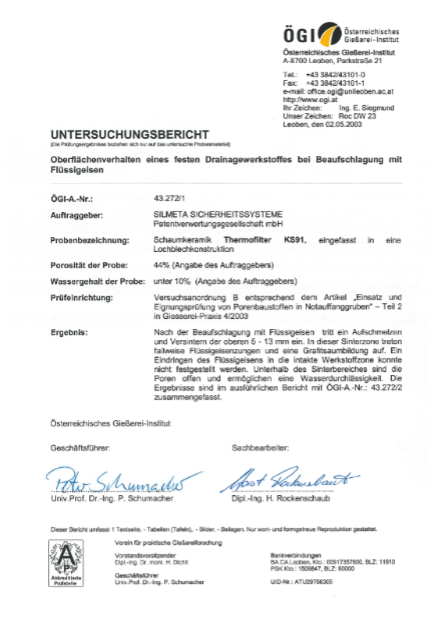Foam ceramic
The development of the foam ceramic KS 91 by Silmeta Systems dates back to 1991. As the first solution worldwide, foam ceramic KS 91 allows for accumulating cooling water and/or surface water also be discharged within the separating and surrounding walls of an emergency run-out pit. The same applies to steam. Vertical walls practically never lose their permeability to all media. The bottom, on the other hand, quickly becomes impervious to dirt common to foundries.
Cement-bound mixes/concretes usually require full-surface formwork for the production of vertical walls, which is removed after curing. Depending on the amount of mixing water and the type of compaction, the walls/components are sometimes more and sometimes less dense after stripping the formwork. An exact reproducibility of the porosity for each casting is therefore not possible in practice.
Foam ceramic KS 91 does not require any formwork to be removed after curing. Foam ceramic KS 91 is placed loosely and not compacted. The finely distributed pores within the grain size are retained. Partition and surrounding walls made with foam ceramic KS 91 are ready for use the very next day and can be immediately charged with melt.
Conventional drainage concrete = aerated concrete has a very small sintering interval. Melt penetrates deep into the pores – until the melt solidifies. This may result in contact with water. Thus, the penetration depth of aerated concrete is primarily dependent on the solidification interval of the melt. The best protection against steam explosion within the walls would be given at a penetration depth = zero mm.
Foam ceramic KS 91 sintered immediately on contact with melt. The melt solidifies outside. Behind the sintered layer, foam ceramic KS 91 remains completely permeable to water and water vapor. There is no pressure build-up, thus no dreaded steam explosion.
